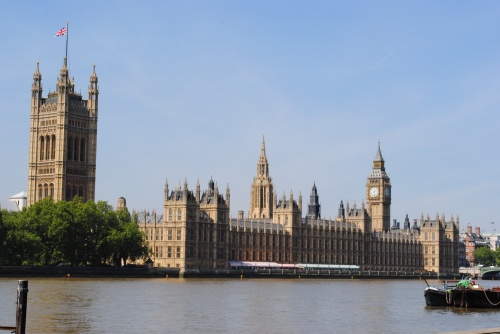London
Thomson Reuters Foundation
More than 3,000 suspected victims of slavery who were trafficked into Britain from outside of Europe languish in the system, and are far less likely than their local counterparts to receive timely assistance, according to anti-trafficking charities.
The two-tiered system leaves African and Asian victims at greater risk of fresh exploitation than Britons and fellow Europeans, several campaigners said, as the longer victims must wait for help, the more likely they are to be enslaved again.

Houses of Parliament in Westminster. PICTURE: David Adams
“All victims of modern slavery deserve timely and good quality decisions – irrespective of their national origin,” said Victoria Marks, director of the Anti Trafficking and Labour Exploitation Unit, which provides legal aid for victims.
Official data shows that people from outside the European Union who say they have been enslaved or trafficked into Britain are far less likely to have their cases processed by the government compared to their British or EU counterparts.
Overall, about 7,000 possible slavery victims were uncovered in Britain last year – up a third on 2017 – shows data released this week by the National Crime Agency, and exclusively revealed by the Thomson Reuters Foundation last month.
Those who say they have been enslaved can enter the National Referral Mechanism and access support, be it healthcare, housing or legal aid, while the British government decides whether or not to recognise them as victims.
Possible victims are given 45 days to recover while their cases are considered, and government guidelines say a decision should be made “as soon as possible” thereafter.
Although 4,500 people from non-EU countries were referred to the NRM in 2018, almost 65 per cent of its cases, just six per cent were identified as being trafficked last year. More than 3,000 of these cases are still awaiting a final government decision.
In comparison, about 35 per cent of those from Britain or EU countries were identified as slaves, and just 700 cases belonging to EU and British nationals were pending last year.
ATLEU called the discrepancies “systemic”, with some non-EU nationals having to wait three years for a decision.
“The problem is systemic. The quality of decision-making this group experiences is extremely poor and needs to be addressed urgently,” Marks said in emailed comments.
A Home Office spokesman said it had more than doubled the number of case workers to address the backlog.
“We are reforming the NRM to improve the support available to victims before, during and after the NRM process,” he said.
The Home Office in 2017 announced several reforms to the NRM, including extra shelter and support, drop-in services and an overhaul of the decision-making and review processes.
Labour exploitation – from men working in car washes to children forced to carry drugs – remained the most common form of modern slavery, with most suspected victims from Britain, Albania and Vietnam, the same as in 2017, the NRM data revealed.
Vicky Brotherton, an anti-slavery researcher at the University of Nottingham, said the backlog meant that victims, who are unable to work or move on with their lives, were left “languishing in the system” and at risk of abuse once more.
“There have been cases of people having to go back into exploitative conditions just so they can pay their way.”
Kate Roberts, head of the Human Trafficking Foundation that works to boost victim support, questioned the logic of putting people into a system that leaves them “in a state of limbo”.
Despite once being hailed as a global leader in the anti-slavery drive, Britain is undergoing a review of its landmark 2015 law amid criticism that it is not being used fully to jail traffickers, drive firms to stop forced labour or help victims.
Britain is home to at least 136,000 modern slaves, according to the Global Slavery Index by rights group Walk Free Foundation – a figure 10 times higher than a government estimate from 2013.






